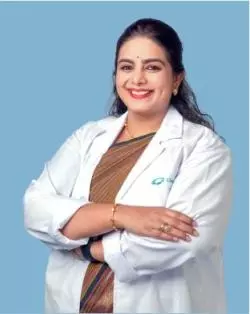When Young Women Get Gynaecological Cancers: The Alarming Shift - Dr Pranathi Aravind

For a long time, gynaecological cancers were largely associated with women in their forties, fifties and beyond. In clinics today, that pattern is changing.
Younger women — some still in their twenties and early thirties — are presenting with cancers we once considered rare in their age group. Among them, endometrial cancer is the most striking example, but cervical, ovarian and even vulvar malignancies are showing a noticeable shift.
This trend is unsettling, not only because of the age at which these women fall ill, but because their symptoms are often overlooked or dismissed until the disease becomes more advanced.
A change in who is getting diagnosed
The new patient profile is very different from the one many of us were trained with. We now see young professionals juggling long work hours, students preparing for competitive exams, and new mothers still adjusting to postpartum changes. They come with complaints like irregular bleeding, persistent pelvic discomfort, bloating or spotting after intercourse.
Many assume these symptoms are due to stress, hormonal imbalance or a busy lifestyle — and often, even their first medical consultations focus on regulating cycles rather than investigating deeper. This delay in recognising atypical presentations is one of the reasons cancers are being detected late.
What might be driving this shift
There is no single explanation, but a combination of factors seems to be shaping this trend. Rising rates of polycystic ovarian syndrome (PCOS), obesity, insulin resistance and irregular ovulation are major contributors, especially in endometrial cancer. Chronic anovulation leaves the uterine lining exposed to unopposed estrogen, setting the stage for abnormal cell growth.
Exposure to environmental endocrine disruptors — present in plastics, processed foods and certain cosmetics — may also be influencing hormonal regulation at younger ages. Add to that lifestyle patterns: disrupted sleep cycles, sedentary routines, and increased stress levels, all of which have subtle effects on hormonal and metabolic health.
For cervical cancer, the story is slightly different. Increased awareness and vaccination have helped in some regions, but screening gaps remain. Many young women are still hesitant to have their first Pap smear or HPV test, and persistent high-risk HPV infections can progress silently over the years.
The emotional cost of a delayed diagnosis
The shock of receiving a cancer diagnosis so early in life is immense. Young women worry not only about survival, but also about fertility, relationships, body image and career plans. Some feel guilty for ignoring symptoms; others feel misunderstood because they were told they were “too young” for anything serious.
The emotional load is heavy and often underestimated. As clinicians, acknowledging this fear and guiding patients through it is as important as offering medical treatment.
- Early clues that should never be ignored
- One of the most important conversations we can have is about recognising warning signs. Any of the following should prompt a proper evaluation:
- Bleeding between periods or after sexual intercourse
- Unusually heavy or prolonged menstrual cycles
- Sudden, persistent bloating or abdominal swelling
- Pelvic pain that does not settle over weeks
- Unexplained weight changes or fatigue
These symptoms do not always indicate cancer, but they certainly deserve timely attention, especially when they appear in young women with risk factors like PCOS, obesity or irregular cycles.
What prevention can look like
Preventive care for gynaecological cancers has to start much earlier than we traditionally advised. This includes menstrual tracking, managing PCOS, achieving metabolic balance, and prioritising routine screening. The HPV vaccine remains one of the strongest tools in preventing cervical cancer and should be encouraged for eligible adolescents and young adults.
Regular gynaecological check-ups — even when there are no symptoms — provide an opportunity to identify subtle changes long before they become dangerous.
A message of reassurance
While the rising trend is worrying, it is not a hopeless one. When detected early, many gynaecological cancers are highly treatable.
Fertility-preserving treatments are available in selected cases, allowing young women to plan families later. What truly makes the difference is awareness: listening to one’s body, seeking timely medical advice, and not normalising persistent symptoms.
If you or someone you know has been experiencing irregular bleeding, pelvic discomfort or unexplained changes in the menstrual pattern, take it seriously. Early evaluation can prevent months of uncertainty — and in many cases, save a young woman’s life.
Disclaimer: The views expressed in this article are of the author and not of Health Dialogues. The Editorial/Content team of Health Dialogues has not contributed to the writing/editing/packaging of this article.


